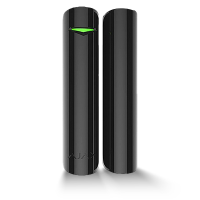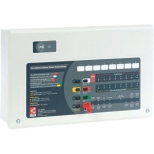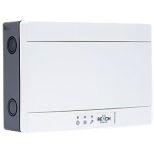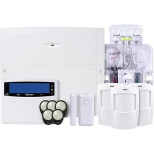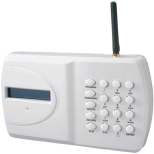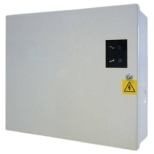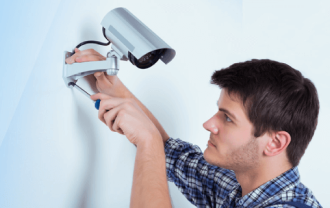A Comprehensive Guide to Safety Detectors
Safety detectors are an essential part of any home or business safety plan. They can detect a variety of hazards, including smoke, carbon monoxide, gas leaks, water leaks and intruders. By alerting people to danger early on, safety detectors can help prevent injuries, deaths and property damage.
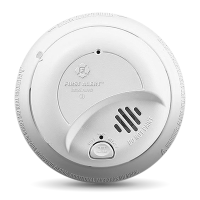
Smoke Detectors
Smoke detectors are the most common type of safety detector. They can detect smoke from a variety of sources, including fires, cooking and smoking. Smoke detectors come in two main types: ionization and photoelectric. Ionization smoke detectors are more responsive to fast-moving, flaming fires. Photoelectric smoke detectors are more responsive to slow-burning, smoldering fires. For the best protection, it is recommended to install both ionization and photoelectric smoke detectors in a home or business.
Uses and applications: Residential and commercial | Homes | Businesses | Warehouses | Any environment where fire is a safety or property damage concern
Heat Detectors
Responding to changes in temperature, heat detectors are versatile tools. They find applications in environments where smoke detection might lead to false alarms, such as kitchens. These detectors are available in several temperature types. There are two detection types: fixed temperature and rate-of rise. Fixed temperature detectors activate when the heat reaches the preset range of the detector. The most common temperature types are 135°F (used for garages or dusty, dirty environments) and 194°F (attics or other high heat areas). Rate-of-rise detectors activate when the temperature in the room increases rapidly within a short period — typically, a 15-degree change in under a minute.
Uses and applications: Industrial and commercial | Garages | Kitchens | Areas with high humidity
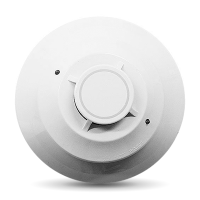
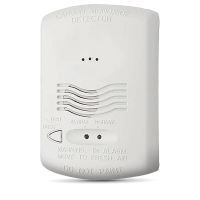
Carbon Monoxide Detectors
Carbon monoxide (CO) is a colorless, odorless gas that can be deadly. Carbon monoxide detectors can detect CO leaks from appliances, such as furnaces, water heaters and stoves. They are indispensable in homes and businesses where any gas-powered device poses a potential risk. CO detectors come in two main types: electrochemical and semiconductor. Electrochemical CO detectors are more accurate and reliable than semiconductor CO detectors. Semiconductor CO detectors are less expensive than electrochemical CO detectors, but they are more prone to false alarms.
Uses and applications: Residential and commercial | Homes | Businesses | Restaurants | Warehouses | Any environment where gas-powered devices pose a potential risk
Combination Detectors
Combination detectors provide a dual function by integrating smoke and carbon monoxide detection capabilities. This not only streamlines safety measures but also reduces the number of devices required, making them a practical choice for comprehensive safety solutions. These types of detectors are a good option to provide a holistic approach to protection, especially in environments with multifaceted risks.
Uses and applications: Residential and commercial | Any environment or situation where streamlining the number of smoke and CO detection devices is preferred
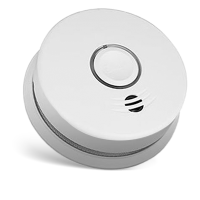
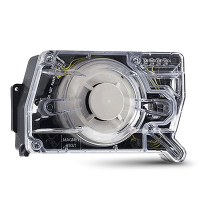
Duct Smoke Detectors
Duct smoke detectors — installed within heating, ventilation and air conditioning (HVAC) systems — play a vital role in preventing the spread of smoke through ventilation systems in commercial buildings. By detecting smoke within ducts, they contribute to the overall safety of large structures. Duct smoke detectors are often integrated into a building's overall fire alarm system, which allows for a coordinated response. The installation and use of duct smoke detectors are typically governed by local building codes and standards.
Uses and applications: Primarily commercial and industrial | Restaurants | Corporate offices | Warehouses | Any similar environment
Flame Detectors
Designed to detect the presence of flames, flame detectors are commonly used in industrial settings where the risk of fire is higher. They quickly identify the onset of a fire, triggering alarms and safety protocols. Although primarily used for industrial applications, flame detectors can also be used in residential settings to protect against fires caused by flammable liquids and gases.
Uses and applications: Primarily commercial and industrial | Oil and gas facilities | Power plants | Other industrial environments
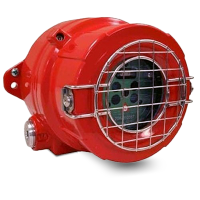
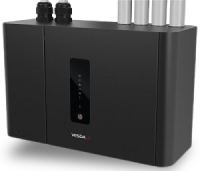
Aspirating Smoke Detectors
Aspirating smoke detectors represent an advanced frontier in fire detection technology, offering unparalleled sensitivity and early warning capabilities. These detectors function by actively drawing in air from the monitored space through a network of pipes, continuously analysing air samples for minute traces of smoke particles. This aspirated approach enables swift detection even in challenging environments where traditional detectors might struggle, such as high-ceilinged areas or spaces with limited air circulation.
Uses and applications: Commonly employed in critical facilities like data centres, museums, and server rooms, aspirating smoke detectors provide an invaluable early warning system, minimising false alarms and ensuring heightened fire detection sensitivity for enhanced safety.
Beam Smoke Detectors
Beam smoke detectors are innovative safety devices designed for expansive spaces. Unlike traditional point detectors, beam detectors employ a transmitter and receiver positioned at a distance across the area. The transmitter emits a light beam, and the receiver monitors its continuity. If smoke interrupts the beam, the detector triggers an alarm. This technology provides cost-effective coverage over extensive areas with minimal equipment, reducing installation and maintenance expenses.
Uses and applications: Beam smoke detectors are particularly advantageous in high-ceiling environments, offering efficient early detection, making them a vital component of fire safety systems in large, open structures such as warehouses, atriums and large halls.
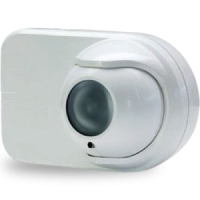
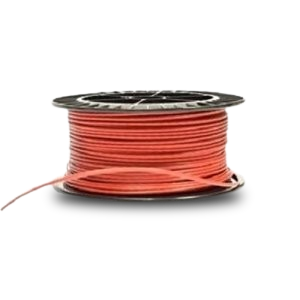
Linear Heat Detection (LHD)
Linear heat detectors operate on the fundamental principle of detecting temperature changes along a continuous cable length. These cables are designed with a heat-sensitive element that reacts to increases in temperature, triggering an alarm when a predefined threshold is surpassed. The detection technology can be broadly classified into two main types: digital and analogue.
Uses and applications: Tunnel fire detection | Petrochemical industry | Aircraft Hangars | Warehouses and storage facilities | Power Generation Plant | Substations and control rooms | Mining industry | Solar panels | Historic buildings and museums
Environmental Detectors
Environmental detectors are indispensable tools for risk mitigation and safety enhancement. Liquid leak detectors, employing cutting-edge sensing technologies, swiftly identify spills or leaks, preventing water damage in applications like data centres, laboratories, and residential basements. Temperature sensors maintain optimal conditions, protecting perishable goods during transportation and ensuring server rooms operate within specified temperature ranges. Flood sensors act as early warning systems in areas prone to flooding, such as basements and coastal regions. Humidity sensors are critical for preserving delicate items like artworks and pharmaceuticals. These detectors collectively form a robust environmental monitoring system, offering proactive solutions across various industries to prevent potential disasters and safeguard valuable assets.
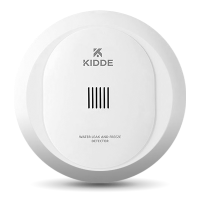
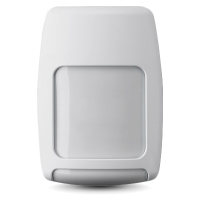
Motion and Perimeter Detectors
Robust intrusion detection is crucial for safety, employing sensors like passive infrared motion detectors (PIR) and PIR/microwave counterparts. While microwave-only options may yield false alarms, motion detectors are essential in residential and commercial security, with PIR detectors excelling in controlled spaces. Combination devices with PIR and microwave technologies are favoured in rugged environments like warehouses. Augmenting security, perimeter detection, and photoelectric beam detectors form a critical defence. Photoelectric beams create invisible barriers, ideal for securing residential boundaries, industrial sites, and critical infrastructure. Deployed along fence lines, these detectors offer early warnings, ensuring precision and reliability to fortify security and prevent unauthorised access in a concise and comprehensive approach.
Uses and applications: Residential and commercial intrusion | Outdoor lighting control | Smart home automation | Entry automation | Driveway monitoring
Smart Detectors
Smart detectors integrate various features to ensure comprehensive safety and security. Motion detection identifies and alerts on movement for occupancy and trespassing. People counting is a feature that determines the number of individuals within the area, allowing for customised alerts on anomalies. The vape detector function specialises in identifying vape usage, vape masking, and detecting tetrahydrocannabinol (THC). The health monitoring feature safeguards against infectious diseases, poor ventilation, and air quality issues by detecting carbon monoxide, carbon dioxide, humidity, temperature, particulates, total volatile organic compounds (TVOC), and dangerous chemicals. Safety monitoring includes detecting abnormal noise levels, recognising specific keywords, signalling a call for help, and tamper protection. This comprehensive system offers a holistic approach to security, health, and safety in diverse environments.
Uses and applications: Public Toilet Areas | Changing Rooms | Hotel Bedrooms | School Toilets
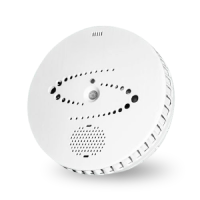
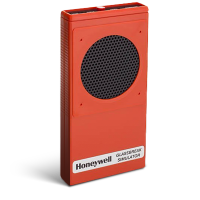
Glass Break Detectors
Glass break detectors are designed to identify the sound of breaking glass, providing an additional layer of security against forced entry. They are integral components of comprehensive security systems and are particularly useful for securing doors and windows that are vulnerable to forced entry through glass breakage. These detectors are typically installed on walls or ceilings near the windows or glass doors they are protecting. They should be positioned within the specified range of the protected glass.
Uses and applications: Residential and commercial | Homes | Offices | Schools | Businesses
Magnetic Door Detectors
Magnetic door detectors, also known as magnetic door contacts or magnetic door switches, are devices used in security and access control systems to monitor the status of doors, windows or other access points. These detectors are designed to signal whether a door or window is open or closed and can be an essential component of security and automation systems. Magnetic door detectors can be wired or wireless. Wired versions require physical connections to a control panel or monitoring system. Wireless models use radio signals to transmit data to a central controller, which can be more convenient for installation and flexibility.
Uses and applications: Residential and commercial | Homes | Offices | Schools | Businesses | Any residential or commercial environment
